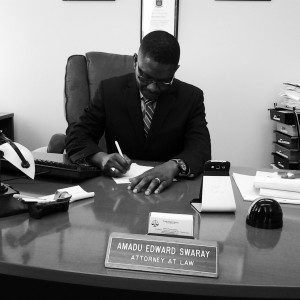A preference category immigrant is an immigrant visa beneficiary that has been classified by her petitioner but cannot apply for an immigrant visa (Green Card) to enter the United States because no visa is yet immediately available to her. The Citizenship and Immigration Services (CIS) issues the immigrant beneficiary a priority date that is listed on the notice of her approved alien relative petition. The priority date is the date, in the case of a family based petition, on which the alien relative petition was filed with the CIS by the petitioner. The alien beneficiary would then have to stay in the preference category, also called “The Waiting List”, until an immigrant visa becomes available. A visa becomes available when the priority date on the alien relative petition becomes earlier than the stated cut-off date under a a particular Preference Category on the the United States State Department immigration visa bulletin.
There are four preference categories in family sponsored visa petitions, and to which the United States Congress allocates a maximum number of visas in each fiscal year. The categories are as follows:
and to which the United States Congress allocates a maximum number of visas in each fiscal year. The categories are as follows:
First: (F1) Comprises unmarried Sons and Daughters, age 21 or older, of United States citizens. Congress allocates 23,400 visas plus any number of unused visas from the Fourth preference category each year to this category.
Second: (F2) Comprises spouses and children, and unmarried Sons and Daughters of Permanent Residents. Congress, each year, allocates 114,200 visas plus any visa left overs after the 226,000 visa allocation in all the other categories plus any unused visas in the First Preference Category. F2 Preference Visa Categories are subdivided into F2A and F2B. The F2A visa subdivision comprises all spouses and unmarried children, under 21, of Permanent Residents. The F2B category comprises unmarried Sons and Daughters, 21 years or older, of Permanent Residents. Of the 114,200 visas in the F2 category, Congress allocates 77% or approximately 87,973 visas to the F2A category while it allocates 23% or 26,266 visas to the F2B category. Of the 77% overall visa allocation to the F2A category, 75% are exempt from the visa per-country limit.
Third: (F3) Comprises married Sons and Daughters of US citizens. Congress allocates 23,400, plus any left over visas in the First and Second preferences in this category.
Fourth: (F4) Comprises Brothers and Sisters of adult US citizens. Congress allocates 65,000, plus any unused visas from the first three preferences.
Let us suppose that a United States citizen acquires an approved alien relative classification from the CIS for her adult Daughter that is over 21 years old, but the beneficiary, after the establishment of the application priority date, gets married to an alien. What then happens to the approved alien relative petition after the marriage? Does the marriage extinguish the petition?
The answer to this question, which very often confronts the ill-informed immigrant visa beneficiary, is no, because the doctrine of automatic conversion springs to the rescue of the petition, and saves it from destruction.
Automatic conversion, under immigration law, as it relates to the preference category visa processing, is where an event pertaining to the status of the alien beneficiary causes the beneficiary’s relationship to the qualifying relative to shift from one preference category to another in the list of preference categories. In Matter of Wang, the BIA stated that when the event occurs, neither the beneficiary, nor an immigration officer, need take an action to bring the preference category conversion into effect. Rather, the conversion occurs by operation of law. The Board further stated that the conversion does not entail a change in the petitioner or the sponsored’s status as it relates to the application process, or a new filing of the petition. See Matter of Wang, 25 I & N Dec. 28, 35 (BIA 2009). In addressing the same matter in 2014, the United States Supreme Court stated that the conversion does not involve additional service decisions, contingencies or delays. In fact, it operates as a mechanical cut-and-paste job, and moves the petition without any substantive alteration from one category to another. The occurrence of the event should notify and instruct the immigration officer to change the current preference category of the beneficiary to another as provided by the preference category law. See Scilabala v. De Osorio, 134 S.Ct. 2191, 2204 (2014).
In the case of the over 21 alien beneficiary, the conversion would automatically remove the beneficiary from the First Preference category comprising unmarried Sons and Daughters of United States citizens to the Third Preference category, which comprise married Sons and Daughters of US citizens.
Automatic conversion allows the beneficiary to keep her originally approved alien relative priority date. Here, the married beneficiary, even though she is now in a different preference category, will maintain, based on this provision, her original alien relative priority date.
But what happens if the alien beneficiary’s marriage fares badly and she is forced to dissolve it even before the completion of the immigrant visa process? Does the dissolution destroy the approved alien relative petition and the concomittant new Third Preference Category? If not, is she stuck in the category?
The answer is no! The Code of Federal Regulation (CFR), in support of the automatic conversion theory, states that when the dissolution event occurs, the beneficiary’s classification reverts back from her present F3 category to the former F1 Preference Category, where she was before she conjugally became active. Again, under the automatic conversion theory, no special legal intervention is warranted. The appropriate event shifts occur automatically and by themsleves. See 8 CFR 204.2(i) (1) (iii).
As one can see, by now, automatic conversion is a refuge to approved alien relative petitions that are kept on the waiting preference category cliff.
The writer of this blog, Amadu Edward Swaray, is an immigration attorney with Swaray Law Office in Brooklyn Center Minnesota. Brooklyn Center is one of the contiguous cities around Minneapolis, Brooklyn Park, Crystal, Robbinsdale, Anoka and Champlin. The article is not intended to be a legal advice to anyone, but a mere legal information. If you or someone you know is interested in knowing more about family immigration visas, and or Automatic Conversion, in particular, contact the Law Office at 763-549-0670 or swarayassociates@cs.com.

 programs that promote cultural exchange, and to engage in medical and business training. The visa came into effect under the Fulbright Hays ACT of 1961. Applicants must meet the eligibility criteria defined by a particular J-1 visa. These include English language requirements and sponsorship by a university, private sector or government program. There are at least nine private sector and six government and academic J-1 visa programs.
programs that promote cultural exchange, and to engage in medical and business training. The visa came into effect under the Fulbright Hays ACT of 1961. Applicants must meet the eligibility criteria defined by a particular J-1 visa. These include English language requirements and sponsorship by a university, private sector or government program. There are at least nine private sector and six government and academic J-1 visa programs. ation court. Once an alien is granted the voluntary departure, he gives up all rights to any other available relief and must depart the United States within the time the immigration court has specified. Under a voluntary departure grant, the alien can depart the United States on his own, without the ten year bar of a removal order, and can legally re-enter the country. There are four types of voluntary departure. They are pre-hearing voluntary departure, voluntary departure at the beginning of a removal hearing, voluntary departure from the Department of Homeland Security (DHS) during a removal proceeding and voluntary departure from the court at the end of a removal hearing.
ation court. Once an alien is granted the voluntary departure, he gives up all rights to any other available relief and must depart the United States within the time the immigration court has specified. Under a voluntary departure grant, the alien can depart the United States on his own, without the ten year bar of a removal order, and can legally re-enter the country. There are four types of voluntary departure. They are pre-hearing voluntary departure, voluntary departure at the beginning of a removal hearing, voluntary departure from the Department of Homeland Security (DHS) during a removal proceeding and voluntary departure from the court at the end of a removal hearing.
 Congress created the EB-5 immigrant visa in 1990 with the core purpose of attracting new foreign investment capital to the country, and to create new jobs for United States workers. Since then, the visa program has yielded phenomenal results. By 2008, the program had pumped over $15.4 billion foreign direct investment into the US economy. Between 2010 and 2013, it had injected $9.62 billion, and 29,300 jobs and $12.08 billion in tax revenue.
Congress created the EB-5 immigrant visa in 1990 with the core purpose of attracting new foreign investment capital to the country, and to create new jobs for United States workers. Since then, the visa program has yielded phenomenal results. By 2008, the program had pumped over $15.4 billion foreign direct investment into the US economy. Between 2010 and 2013, it had injected $9.62 billion, and 29,300 jobs and $12.08 billion in tax revenue.
 Congress enacted the U-visa in October of 2000 under the Victims of Trafficking and Violence Protection Act (VTVPA). It was part of a two category law designed to protect victims of violent crime and human trafficking. After its enactment, it did not appear that the Department of Homeland Security (DHS) was immediately willing to enforce it. In fact, the Department granted no U-visa relief to anyone until 2007. Even then, it did so under pressure of a class action suit, which the Center for Human Rights and Constitutional Law (CHRLW) and other interested parties initiated, to force DHS to enforce the enactment.
Congress enacted the U-visa in October of 2000 under the Victims of Trafficking and Violence Protection Act (VTVPA). It was part of a two category law designed to protect victims of violent crime and human trafficking. After its enactment, it did not appear that the Department of Homeland Security (DHS) was immediately willing to enforce it. In fact, the Department granted no U-visa relief to anyone until 2007. Even then, it did so under pressure of a class action suit, which the Center for Human Rights and Constitutional Law (CHRLW) and other interested parties initiated, to force DHS to enforce the enactment.